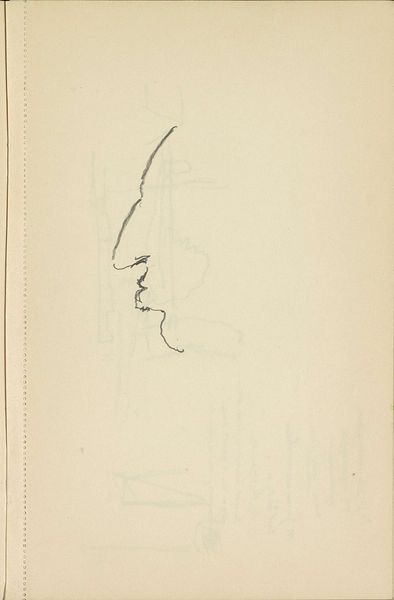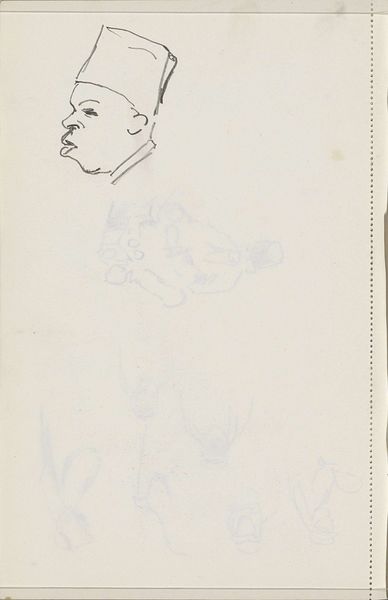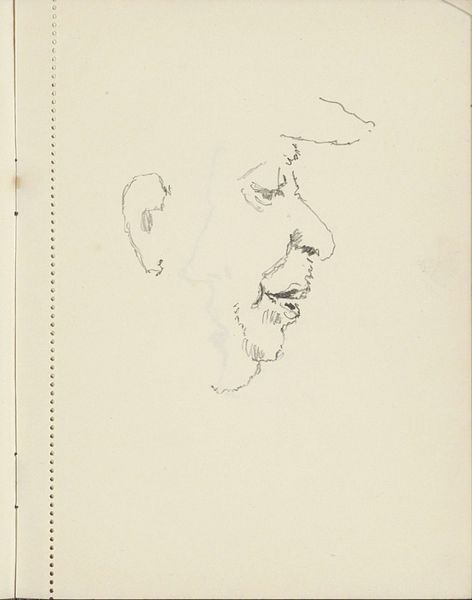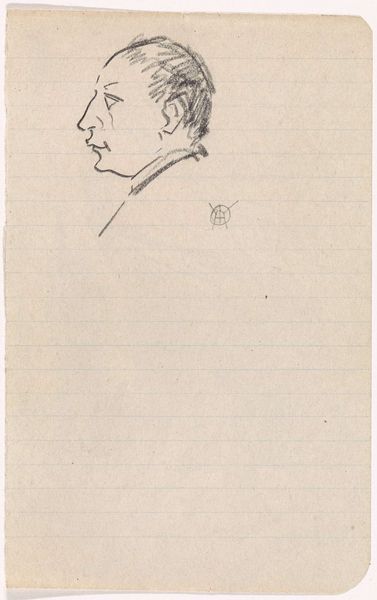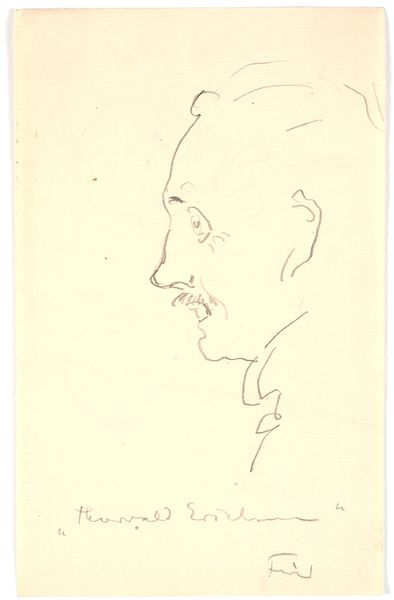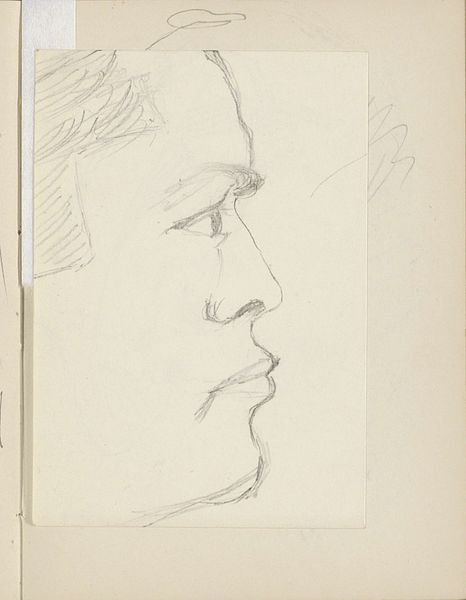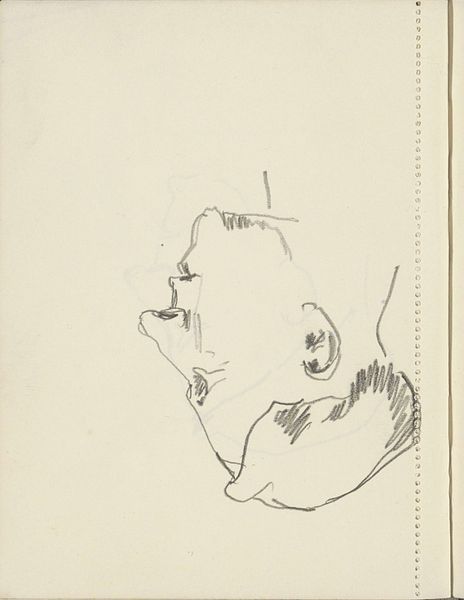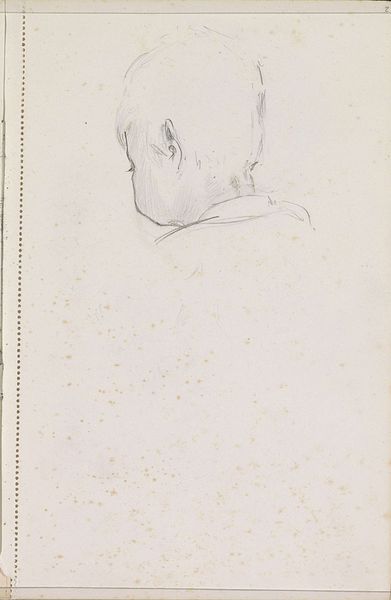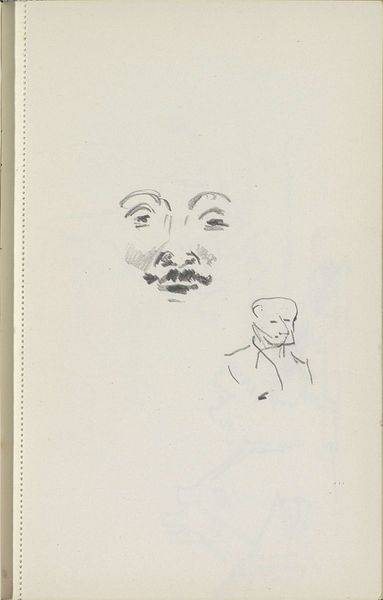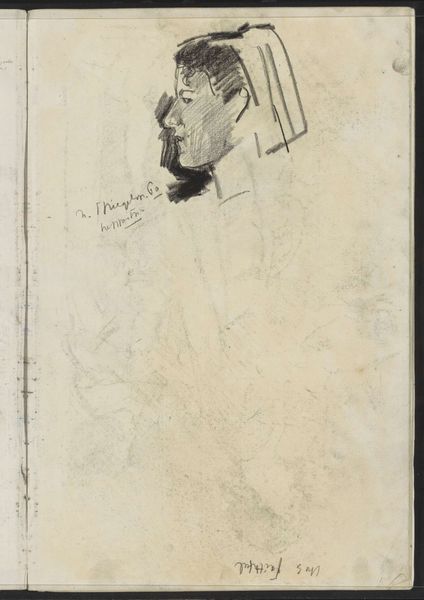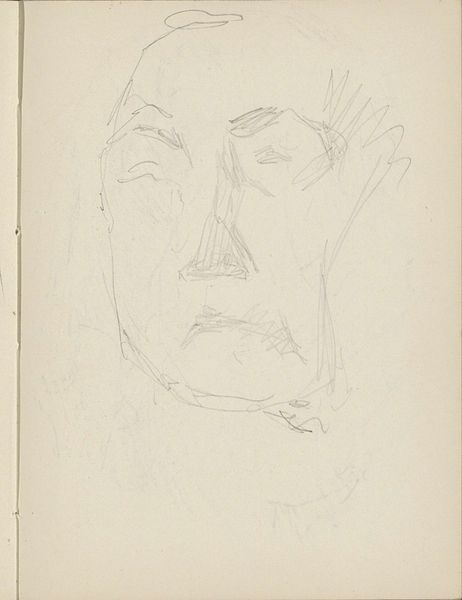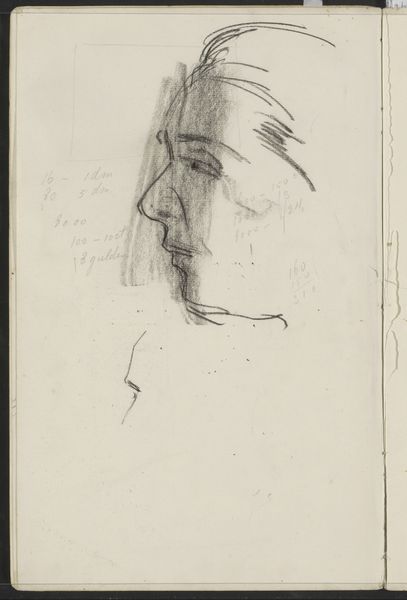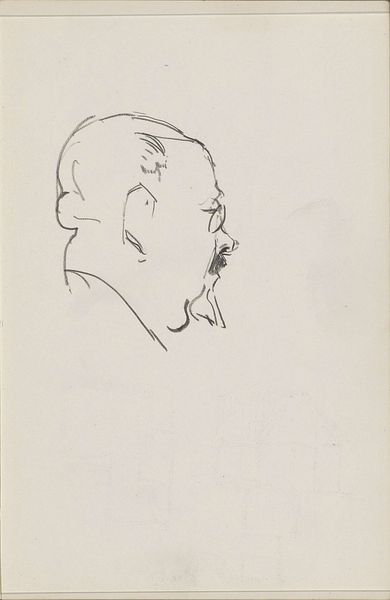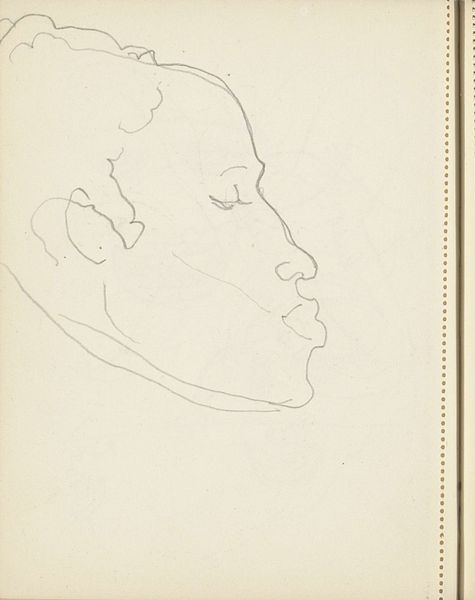
drawing, ink, pen
#
portrait
#
drawing
#
pen sketch
#
figuration
#
ink
#
pen
Copyright: Rijks Museum: Open Domain
Editor: Here we have Cornelis Vreedenburgh's "Head of a Man," dating between 1890 and 1946, rendered in ink and pen. There’s a kind of immediacy to the lines. What's your take on this simple sketch? Curator: Looking at this drawing, I'm drawn to consider the materials first. Pen and ink—ubiquitous tools, right? But consider their role: readily available, affordable. They democratize art making. And note how Vreedenburgh hasn’t obscured the process; the sketch shows its working. The economic accessibility of the medium places it within a specific social framework. How does that affect its reception, do you think? Editor: That’s interesting. I guess because it looks unfinished, I see it more as a study, maybe lacking the ‘aura’ of a final piece done in oils, for example? Curator: Precisely! That "aura" you speak of—it's socially constructed, tied to market value and perceptions of skill derived from the consumption patterns of wealthy classes, even during the late 19th and early 20th century. Vreedenburgh has deliberately challenged the established views of materials with these deliberate sketchy lines. Notice the bare page around it: it reinforces the immediacy of his activity of *making*. Editor: So it’s almost a commentary through the very act of its production? Curator: Exactly. The choice of materials, the visible process – it questions the elevated status often assigned to more ‘precious’ art forms. By showcasing the rudimentary means, Vreedenburgh exposes and comments on the wider world around art making. Editor: I’m starting to see how the medium becomes the message here. Thanks, that perspective really shifted how I see the drawing. Curator: Absolutely, by looking closer into artistic production we unravel societal assumptions surrounding value, class and consumption in art itself.
Comments
No comments
Be the first to comment and join the conversation on the ultimate creative platform.
